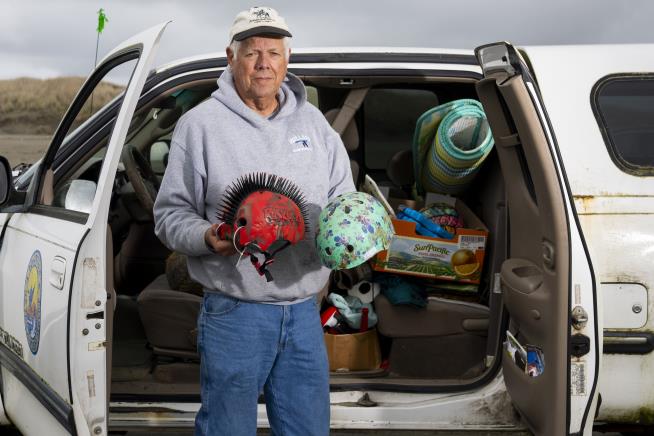Russ Lewis has picked up strange things along the coast of Long Beach Peninsula in Washington state over the years: Hot Wheels bicycle helmets with feather tufts, life-size plastic turkey decoys made for hunters, colorful squirt guns. And Crocs, so many mismatched Crocs. If you find a single Croc shoe, you might think somebody lost it on the beach, he said.
"But, if you find two, three, four and they're different—you know, one's a big one, one's a little one—that's a clue." These items aren't like the used fishing gear and beer cans that Lewis also finds tossed overboard by fishers or partygoers. They're the detritus of commercial shipping containers lost in the open ocean, the reports.
Most of the world's raw materials and everyday goods that are moved over long distances are packed in large metal boxes the size of tractor-trailers and stacked on ships. A trade group says some 250 million containers cross the oceans every year, but not everything arrives as planned. More than 20,000 shipping containers have tumbled overboard in the last decade and a half.
Their varied contents have washed onto shorelines, poisoned fisheries and animal habitats, and added to swirling ocean trash vortexes. Most containers eventually sink to the sea floor and are never retrieved. Cargo ships can lose anywhere from a single container to hundreds at a time in rough seas.
Experts disagree on how many are lost each year. The World Shipping Council reports an average of 1,500 containers were los.


















